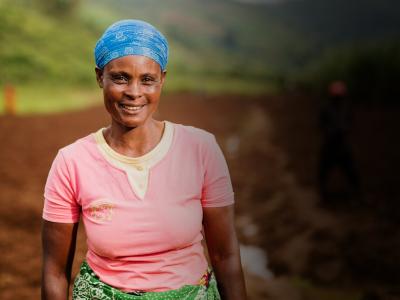The pandemic is setting back the strides made towards gender equality for women around the world, especially in education.
Women are taking on disproportionate amounts of household work during COVID-19, have more caregiving responsibilities on average, are more susceptible to gender-based and domestic violence, and lack access to distanced learning resources, all making continued education extremely difficult during a pandemic. These vulnerabilities are elevated when looking at women and girls in the world’s most conflict-affected areas.
COVID-19 will not just disrupt the education of many young women in conflict zones this year; in some cases, adolescent girls will be forced to end their education entirely due to reasons outside of their control.
Equal access to secondary and higher education for women and girls in many conflict zones was low prior to the pandemic, keeping millions of women out of many job fields and from learning many valuable life skills. For example in Afghanistan, only 4.9 percent of women could access higher education compared to 14.2 percent of men. Physical school spaces are areas of safety and empowerment when a woman is working on her education. When schools across the world closed their doors during the pandemic, women attending secondary and post-secondary schools such as traditional college, trade school, and other forms of continuing education were left without these spaces. Now at home, women come to face two major obstacles to their education.
Access to resources for distanced learning is lacking in conflict zones.
While countries across the globe are adjusting to online learning, many conflict-affected areas do not have the means for adequate e-teaching. A lack of technology and resources, such as the internet, computer, and mobile phone ownership are large barriers. Almost every conflict zone worldwide has a gender gap in their internet usage. The 2020 Mobile Gender Gap Report estimates women are 20 percent less likely than men to use mobile internet worldwide. This could be caused by lack of access in their community and home or resistance to them using technology and the internet by other members of their family. Women who attempt to use the internet or technology for their education could even face violence or retaliation.
Rates of violence against women and girls are increasing world-wide.
Increases in gender-based violence (GBV) have raised the likelihood of early or forced marriages. Work associated with child marriage such as caregiving and negative attitudes towards education by women’s spouses can make staying in school extremely difficult. These early marriages, other forms of GBV such as rape, and decreases in access to reproductive healthcare for women in conflict (another effect of COVID-19) could surge the rate of unwanted pregnancies. Already in Jordanian refugee camps, it is estimated that the number of women who were unable to access family planning services has gone up significantly. Spikes in GBV and reduced family planning services alone are estimated to cause millions of unexpected pregnancies. The physical effects of pregnancy and elevated responsibilities for childcare take over the ability for women to fully complete their studies.
News reports during the pandemic are already showing these estimates to be true. Marriages and early pregnancy are currently surging in conflict-affected countries such as Iraq, Nigeria, the Democratic Republic of the Congo, and South Sudan. UNESCO’s COVID-19 Global Education Coalition estimates that school closures during COVID-19 in sub-Saharan Africa could increase early pregnancy by nearly 65 percent and decrease national graduation rates for upper-secondary schools.
How will this affect women’s power for years to come?
Education for women builds lives for generations, and less women with access to education could have long-lasting and devastating impacts on both women’s human rights and global peacebuilding goals years down the line. Unleashing the power of women through their right to schooling is crucial to rebuilding families, communities, and countries.
Women with educational power affect other women and girls, giving them the opportunity to receive valuable leadership skills and tactics to uphold their rights. A mother with an upper-secondary or post-secondary education is more likely to raise daughters with high levels of education, causing a ripple-effect for decades to come.
Women survivors of conflict and war are also the key to successful nations. Because women and girls face disproportionate effects of conflict such as gender exclusion and violence, their voices play an active role in sustainable peace and economic security. Continuing education gives women a greater ability to take part in community and national decision-making, a key need for building peaceful nations after conflict.
What are we doing at Women for Women International?
Like many students worldwide, the women in our country programs have faced the difficulties of being held distant from their education. Our staff has remained dedicated to making their transition to in-home learning smooth, comfortable, and engaging despite the vulnerabilities they face. For example, our program teams in South Sudan, the DRC, and Nigeria took on the radio airwaves to continue delivering updates during stay-at-home orders. Even though over 60 percent of our participants had a program disruption in 2020, almost 13,000 women completed the program and became community leaders during the pandemic.
COVID-19 made circumstances more complicated than imagined for women everywhere; however, Women for Women International is dedicated to easing the impacts of COVID-19 for many years to come in order for women to reclaim their power.
